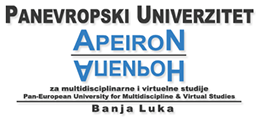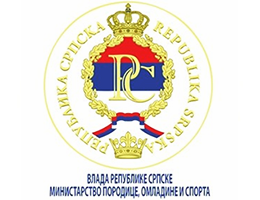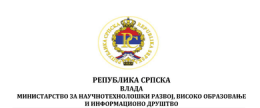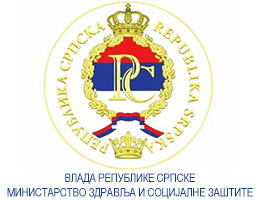Differences in Specific Endurance in Maintaining Shallow Formation With Young Football Players
Volume 1, Issue 2 (2011)
Volume 1, Issue 2 (2011)
Differences in Specific Endurance in Maintaining Shallow Formation With Young Football Players
Abstract:
A study was performed on sample including 72 young soccer players from 6 teams ages 16-18. Who train on a regular basis and who compete on regular basis, aiming to determine if there is a statistically significant difference in specific endurance at maintaining shallow formation with young soccer players at different levels of competition, at the final survey, at the end of preparation stage.
The first sub-sample consists of 37 soccer players who compete in Premier League of Bosnia and Herzegovina.
The second sub-sample consists of 35 soccer players who compete in Youth League of Republic of Srpska. Initial survey of all six teams, was performed at the start of preparation stage, and final survey at the end of preparation stage, with approximately similar conditions.
Central and dispersion parameters, asymmetry measures Skjunisa and Kurtozisa with specific endurance in maintaining shallow formation of the examinees, finally show that at both levels the values sit at expected range, and value of variation coefficient (k.var) pinpoint homogeneity of both analyzed levels.
Univariate analyses that were applied include: ANOCOVA ( p = .951 and p= .821, and obtained results show that there are no significant differences among two levels according to analyzed spaces.) Multivariate analyses applied: MANOCOVA (p = .947) and obtained results show no reason not to accept hypothesis H1, which means that no significant difference noticed between two levels of competition) and the results of discriminative analysis (p = .972) show that no significant difference noticed and clearly defined boundary among any level of competition). Results of this study show that statistically important difference between two levels of examinees of competition in specific endurance at maintaining shallow formation not found including: racewalking 5x60 m with interval break (10 sec), sprint 5x80 m with interval break (10 sec).
The first sub-sample consists of 37 soccer players who compete in Premier League of Bosnia and Herzegovina.
The second sub-sample consists of 35 soccer players who compete in Youth League of Republic of Srpska. Initial survey of all six teams, was performed at the start of preparation stage, and final survey at the end of preparation stage, with approximately similar conditions.
Central and dispersion parameters, asymmetry measures Skjunisa and Kurtozisa with specific endurance in maintaining shallow formation of the examinees, finally show that at both levels the values sit at expected range, and value of variation coefficient (k.var) pinpoint homogeneity of both analyzed levels.
Univariate analyses that were applied include: ANOCOVA ( p = .951 and p= .821, and obtained results show that there are no significant differences among two levels according to analyzed spaces.) Multivariate analyses applied: MANOCOVA (p = .947) and obtained results show no reason not to accept hypothesis H1, which means that no significant difference noticed between two levels of competition) and the results of discriminative analysis (p = .972) show that no significant difference noticed and clearly defined boundary among any level of competition). Results of this study show that statistically important difference between two levels of examinees of competition in specific endurance at maintaining shallow formation not found including: racewalking 5x60 m with interval break (10 sec), sprint 5x80 m with interval break (10 sec).
Keywords:
Young soccer players, Specific endurance, Teams at different levels of competition
Full Text:
References:
- Aubrecht , V., A. Hošek-Momirović (1983): Relacije morfoloških karakteristika i uspešnosti u nogometu, Kineziologija, br. 5, Zagreb.
- Bajrić, O. (2008): Efekti trenažnih transformacionih procesa morfoloških karakteristika, motoričkih sposobnosti, situaciono-motoričkih sposobnosti i uspješnosti nogometaša uzrasta 14-16 godina, Doktorska disertacija, Fakultet sporta i tjelesnog odgoja, Univerziteta u Sarajevu, Sarajevo.
- Bangsbo, J., & Lindquist, F. (1992). Comparison of various exercise tests with endurance performance during soccer in professional players. International Journal of Sports Medicine, 13, 125–132.
- Dujmović, P.(1997). Fizička priprema nogometaša.Zagreb: Zagrebački nogometni savez – zbor trenera.
- Elsner, B., D. Metikoš (1983): Odnosi između bazičnih motoričkih sposobnosti i uspešnosti u nogometu, Kineziologija, br. 2, Zagreb.
- Đurašković, R., Radovanović, D., Joksimović, A. (2002). Uporedni kriterijumi antropometrijskih, funkcionalnih i motoričkih varijabli u selekciji fudbalera mlađih kategorija, Godišnjak 11, Beograd, Fakultet sporta i fizičkog vaspitanja, 125-31.
- Gabrijelić, M. (1972): Neke situacione psihomotorne sposobnosti potencijalno i aktuelno značajne za uspjeh djece u fudbalskoj igri, Kineziologija, 1, Zagreb.
- Gabrijelić, M., Jerković, S. i Barišić, V. (1991). Modeliranje i programiranje specijalne izdržlji vosti nogometaša. Kineziologija, 23 (1-2), 45-58.
- Gabrijelić, M. (1982): Relacije situaciono motoričkih sposobnosti i ocjena uspješnosti nogometaša, FFK, Zagreb.
- Gil, S., Gil, J., Ruiz, F., Irazusta, A. i Irazusta, J. (2007). Physiological and anthropometric characteristics of young soccer players according to their playing position: Relevance for the selection process. Journal of Strength and Conditioning Research, 21(2), 438-45.
- Goranović, S., Lolić, V., Lolić, D., Srdić, V.: “Povezanost eksplozivne snage, agilnosti i preciznosti sa uspjehom u fudbalu kod mlađih kategorija” V Međunarodna konferencija “Menadžment u sportu”, Beograd,Univerzitet “Braća Karić” Fakultet za menadžment u sportu, Olimpijski komitet Srbije, Beograd,2009., str. 186-95.
- Goranović, S., Gašić, T. (2009): “Razlike u motoričkim sposobnostima mladih fudbalera različitog nivoa takmičenja u Bosni i Hercegovini”,16.Međunarodni interdisciplinarni simpozijum “Ekologija, sport, fizička aktivnost i zdravlje mladih”Univerzitet u Novom Sadu , Zbornik radova , izdanje septembar 2010. str.270-284
- Herm, K.P. (1991). The evidence of sportanthropology in training of young soccer players.In Reilly, T., Clarys, J., Stibbe, A. (Eds.), Science and Football, Proceedings Book (pp. 287-292).Eindhoven.
- Lindquist, F. i Bangsboo, J. (1991). Do young soccer players need specific physical training.In Reilly, T., Clarys, J., Stibbe, A. (Eds.), Science and Football, Proceedings Book (pp. 275-281). Eindhoven.
- Marković, G. i Bradić, A. (2008). Nogomet – integralni kondicijski trening. Zagreb: Udruga “Tjelesno vježbanje i zdravlje”.
- Mekić.,M (1985): Povezanost morfoloških, motoričkih i konativnih karakteristika sa rezultatima situacijskih testova i nogometu.Doktorska disertacija, FFK, Sarajevo.
- Pearson, A. (2007). Speed Agility & Quickness for Soccer. London: A & C Black.
- Tabata, I., Nishimura, K., Kouzaki, M., Hirai, Y.Ogita, F., Miyachi, M., & Yamamoto, K. (1996). Effects of moderate–intensity endurance and high–intensity intermittent training on anaerobic capacity and VO2max. Medicine & Science in Sports and Exercise, 28(10), 1327- 30.
- Zbiljski, J. (2000) Specijalna izdržljivost nogometaša i njen uticaj na te-ta sposobnosti mladih nogometaša, Magistarski rad na Fakultetu za fizičku kulturu, Zagreb.






